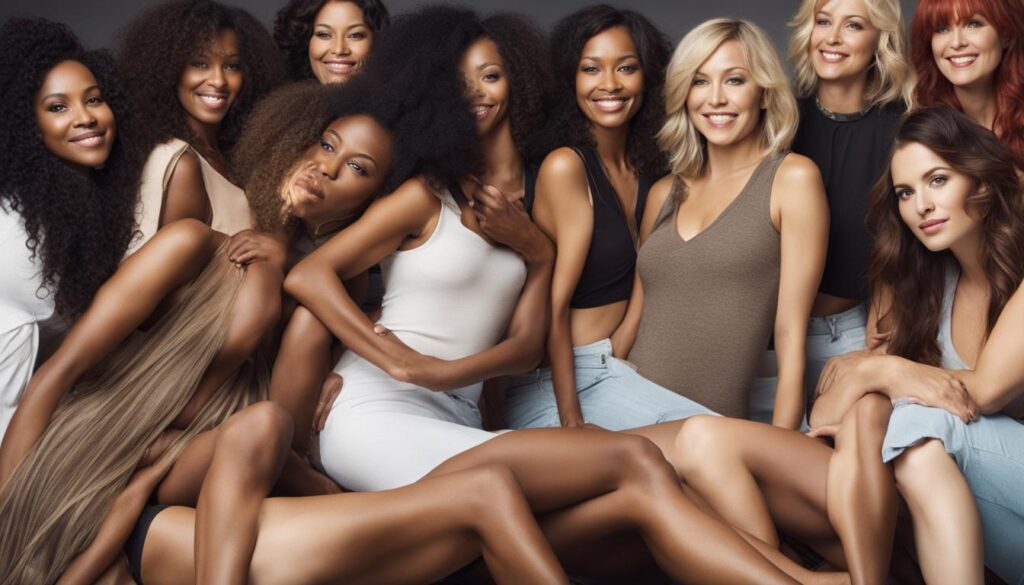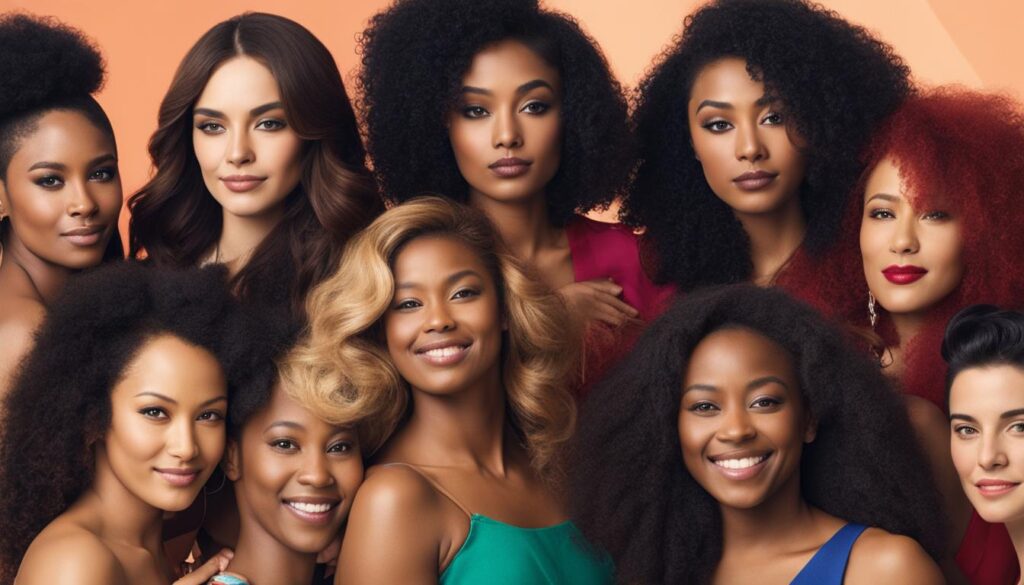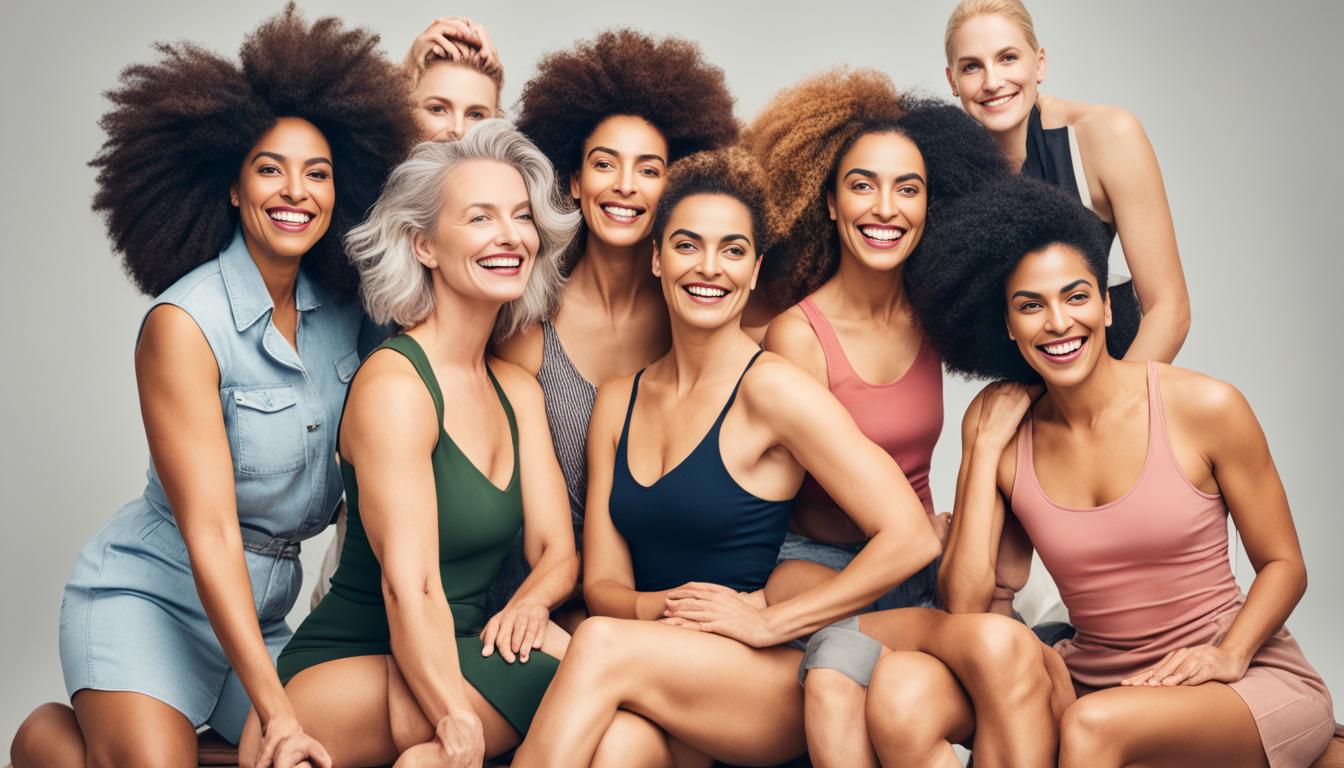What Percentage of Girls Don’t Shave Their Pubic Hair?
When it comes to pubic hair grooming habits, there is a wide range of preferences among girls. While some prefer to remove all their pubic hair, others choose to leave it natural. But what percentage of girls actually don’t shave their pubic hair? Let’s explore the statistics and delve into girls’ grooming preferences.
According to a recent study, over 80 percent of women regularly groom their pubic hair. About 5 percent of them even choose to groom daily. The majority of women remove hair from the front and bikini line, and interestingly, more than 60 percent have opted for a completely bare look. It’s worth noting that men also engage in grooming, with 50 percent reporting regular manscaping. Among men who groom, nearly 90 percent remove hair from the front, and over half remove hair from the scrotum and shaft as well.
It is important to emphasize that pubic hair grooming is a matter of personal preference and does not directly impact sexual pleasure. While some people may feel more comfortable and confident with groomed pubic hair, others may prefer the natural look. It’s all about doing what makes you feel good and aligns with your own grooming preferences.
Key Takeaways:
- Over 80 percent of girls regularly groom their pubic hair.
- About 5 percent of girls groom their pubic hair daily.
- More than 60 percent of girls have chosen to go completely bare.
- Men also engage in grooming, with 50 percent reporting regular manscaping.
- Personal comfort and preference are the key factors in pubic hair grooming habits.
Grooming Related Injuries and Safety Precautions
A 2017 study revealed that more than 25 percent of individuals who groom their pubic hair experience injuries, with women being slightly more prone compared to men. Grooming delicate areas requires caution to prevent accidents and minimize the risk of harm. It is essential for individuals with certain medical conditions or weakened immune systems to consult their healthcare provider and seek advice on the safest methods for pubic hair grooming. In cases of genital injuries, thorough cleaning and immediate medical attention are strongly recommended to prevent complications.
When it comes to grooming one’s pubic hair, safety should be a top priority. Delicate areas require special care to avoid cuts, burns, or infections. Here are some safety precautions to consider:
- Use the right tools: Opt for high-quality grooming tools specifically designed for sensitive areas. Sharp and clean blades are crucial for safe and effective grooming.
- Start with a trim: If you’re new to pubic hair grooming, begin with a trim instead of going straight for complete hair removal. This reduces the risk of cuts and allows you to gradually get used to the process.
- Trimming in the right direction: When trimming or shaving, it’s important to follow the natural growth direction of the hair to minimize irritation and ingrown hairs.
- Keep the area clean and dry: Before and after grooming, ensure the skin is clean and dry to reduce the risk of infections. Avoid using harsh soaps or exfoliating products that may irritate the skin.
- Moisturize after grooming: Apply a gentle, fragrance-free moisturizer to soothe the skin and prevent dryness or irritation.
- Take breaks between grooming sessions: Allow your skin time to recover between grooming sessions to avoid overexposure and potential damage.
By following these safety precautions, individuals can maintain their preferred pubic hair grooming habits while minimizing the risk of injuries and promoting overall well-being.
Expert Insight:
“Pubic hair grooming can sometimes lead to unintended accidents, especially when individuals rush or use improper techniques. Taking the time to groom safely and being mindful of the body’s response can help prevent discomfort and potential complications.”
Grooming Safety Infographic
Pubic Hair Grooming and Sexual Activity
A survey conducted on women’s pubic hair maintenance choices and attitudes towards pubic hair removal revealed interesting insights about the impact of grooming on sexual activity. According to the survey, 73 percent of men and 55.6 percent of women prefer their partners to remove pubic hair before engaging in sexual activity. This indicates a significant expectation for grooming among both genders.
Furthermore, the survey found that individuals who groom their pubic hair, regardless of gender, are more likely to engage in oral sex. The connection between grooming and oral sex suggests that both partners may feel more comfortable and satisfied when pubic hair is removed.
It is important to note that these findings highlight preferences and trends, but they do not imply that any specific grooming choice is necessary for a fulfilling sexual experience. Sexual pleasure is highly subjective, and individual choices should be respected and communicated within a safe and consensual context.
“73 percent of men and 55.6 percent of women prefer their partners to remove pubic hair before engaging in sexual activity.”

Importance of Safe Sexual Practices
While grooming choices may vary, it is crucial to prioritize safety during sexual activity. This includes using protection, such as condoms and dental dams, during oral sex. Protecting oneself and one’s partner from sexually transmitted infections (STIs) is essential, regardless of grooming preferences.
It is also worth mentioning that individuals who choose not to remove their pubic hair are just as entitled to engage in sexual activities as those who do. Respecting and accepting different grooming choices is fundamental to promoting body positivity and sexual autonomy.
Ultimately, sexual activity should be based on open communication, mutual consent, and the comfort and desires of all involved parties.
Factors Influencing Pubic Hair Grooming Choices
When it comes to pubic hair grooming, women’s attitudes and preferences are influenced by various factors. Some choose to remove their pubic hair in order to please their partners or boost their own self-esteem. In fact, approximately 20 percent of women groom their pubic hair because their partners prefer it. However, it is important to remember that personal grooming choices should ultimately be based on individual preferences and not solely for external expectations.
Empowering Women to Make Personal Grooming Choices
Every woman has her own unique grooming habits and preferences when it comes to pubic hair maintenance. It is a personal choice that should be made without feeling pressured or obligated to adhere to societal norms or partner preferences. Women should feel empowered to make choices that align with their own comfort levels and values.
The Impact of Partner Preferences
“At the end of the day, the decision to groom or not to groom should be up to the individual. Mutual acceptance and understanding are key in any healthy relationship, especially when it comes to personal grooming choices.” – Dr. Elizabeth Alvarez, Relationship Therapist
While some partners may have their own preferences when it comes to pubic hair grooming, it is crucial to have open and honest communication in relationships. No one should be forced to change their grooming habits or feel inadequate due to external expectations. Respect for personal choices and acceptance of individuality should always be the foundation of any healthy and fulfilling relationship.
It is important to encourage women to embrace their own bodies and make grooming choices that make them feel confident and comfortable, without succumbing to societal pressure or unrealistic beauty standards. In the end, it is the individual’s happiness and well-being that matter the most.
A Shift in Grooming Trends with Age
As individuals get older, their pubic hair grooming habits tend to change, with a noticeable shift in trends. Research shows that the peak of grooming occurs during adolescence and up to the mid-30s, suggesting that younger women are more inclined to remove or groom their pubic hair.
One possible explanation for this shift in grooming habits with age is the increased acceptance of natural body states. As women mature, they may develop a greater appreciation for their bodies’ natural features, including pubic hair. With age, there may also be fewer pubic hairs to remove due to hormonal changes or personal preferences.
It is important for women to respect and embrace their own bodies and their natural state, regardless of societal trends. Personal grooming choices should be made based on individual comfort and preferences rather than conforming to societal expectations. Women should feel empowered to make grooming choices that align with their own values and personal preferences.
The Impact of Age on Pubic Hair Grooming
The following table highlights the shift in pubic hair grooming trends among females as they age:
| Age Range | Grooming Habits |
|---|---|
| Adolescence to mid-30s | Peak grooming habits |
| Mid-30s to mid-40s | Decline in grooming habits |
| Mid-40s and older | Further decline in grooming habits |
It is important to note that while grooming habits may decline with age, it is a personal choice, and individuals should feel empowered to make decisions that align with their own comfort levels and preferences.
“As women mature, they may develop a greater appreciation for their bodies’ natural features, including pubic hair.”
Grooming trends may vary from person to person, and there is no right or wrong way to approach pubic hair maintenance. Ultimately, it is about personal comfort and embracing one’s unique body.
Partner Preferences and Grooming Choices
When it comes to pubic hair grooming, it’s natural for partners to have their own preferences. However, in a healthy relationship, open and honest communication should be the foundation. No one should feel pressured or forced to change their grooming habits to please their partner. Respect and acceptance of individual choices are essential in maintaining a strong and balanced connection.
Girls’ grooming preferences and female grooming habits can vary greatly, influenced by personal comfort levels, societal norms, and cultural backgrounds. Women’s attitudes towards pubic hair removal also differ, with some embracing natural body hair and others choosing to remove it.
“Communication is key. I believe it’s important for partners to discuss their preferences and find common ground without imposing their own ideals on each other. It’s about mutual respect and understanding.” – Julie Smith
Hair removal is a personal decision that should be made based on individual comfort and self-expression. There are various reasons why women choose to groom their pubic hair, ranging from personal preference to societal expectations. Some may do it because they believe it pleases their partner, while others may find it empowering and boost their own self-esteem. Ultimately, the decision should lie with the individual.
Creating a Healthy Dialogue: Partner Preferences
“In our relationship, we’ve learned to embrace our differences, even when it comes to grooming. We openly communicate our preferences and make compromises that respect each other’s choices. It’s a balance that keeps our relationship strong and supportive.”
– Sarah Thompson
It is important to recognize that grooming choices are personal and should not be influenced solely by external expectations. Both partners have the right to make their own decisions and feel comfortable in their bodies.

Remember, girls’ grooming preferences and female grooming habits are unique to each individual. Women’s attitudes towards pubic hair removal should be respected, as they reflect personal choices and beliefs. By fostering open communication and embracing individuality, partners can strengthen their relationship while honoring each other’s grooming choices.
| Partner Preferences | Grooming Choices |
|---|---|
| Open and honest communication | Respect and acceptance |
| Embracing individuality | Mutual compromise |
| Respecting personal comfort | Honoring individual choices |
Conclusion
When it comes to pubic hair grooming habits, it is clear that personal choice plays a significant role. Whether influenced by societal expectations, partner preferences, or individual comfort levels, women’s pubic hair maintenance choices vary greatly.
Throughout this article, we have explored the trends and factors that shape women’s grooming habits. From the percentage of women who choose to remove their pubic hair to the impact of grooming on sexual activity, it is evident that there is no one-size-fits-all approach.
It is important to prioritize safety when engaging in pubic hair grooming, as injuries can occur. Taking precautions and being aware of any medical conditions or weakened immune systems are vital steps to ensure a safe grooming experience.
Ultimately, each individual should feel empowered to make pubic hair grooming choices that align with their own preferences and values. Whether it’s embracing natural body states or embracing a completely bare look, the decision should be made without external pressures. Open communication, respect, and self-acceptance should be the foundations of any discussion surrounding pubic hair grooming.
FAQ
What percentage of girls don’t shave their pubic hair?
While there is no exact percentage, a recent study found that over 80% of women regularly groom their pubic hair. However, the choice to shave or not shave is a personal preference and varies among individuals.
Are there any safety precautions to take when grooming pubic hair?
Yes, there are safety concerns when grooming delicate areas. A 2017 study found that over 25% of people who groom their pubic hair sustain injuries. It is important to exercise caution and follow proper techniques to avoid harm. Individuals with medical conditions or weakened immune systems should consult with a healthcare provider to determine the safest methods for pubic hair grooming.
How does pubic hair grooming impact sexual activity?
A survey revealed that 73% of men and 55.6% of women prefer their partners to remove pubic hair before engaging in sexual activity. However, it is important to remember that individual preferences can vary. Open communication and respect for personal choices should be the foundation of any healthy relationship.
What factors influence pubic hair grooming choices?
Women’s attitudes towards pubic hair removal are influenced by various factors, including societal norms, partner preferences, and personal comfort levels. Some women choose to remove their pubic hair to please their partners, while others do it for their own self-esteem. Ultimately, the decision to groom or not groom is a personal one that should be based on individual preferences and values.
Do grooming trends change as individuals age?
Yes, grooming habits tend to decline as individuals get older. Peak grooming typically occurs from adolescence to the mid-30s. This decline may be due to a greater acceptance of natural body states and fewer pubic hairs to remove. It is important to respect and embrace one’s own body and its natural state, regardless of societal trends.
Do partner preferences play a role in pubic hair grooming choices?
Partner preferences can influence grooming choices to some extent. A survey showed that both men and women who groom their pubic hair are more likely to engage in oral sex. Approximately 20% of women groom their pubic hair because their partners prefer it. However, it is essential to prioritize open and honest communication in relationships and never feel obligated to change grooming habits to please a partner.
What are the main takeaways about pubic hair grooming habits?
Pubic hair grooming is a personal choice influenced by various factors, including societal norms, partner preferences, and individual comfort levels. Safety precautions should be practiced to prevent injuries, and open communication is crucial in relationships. Each individual should feel empowered to make grooming choices that align with their own preferences and values.






